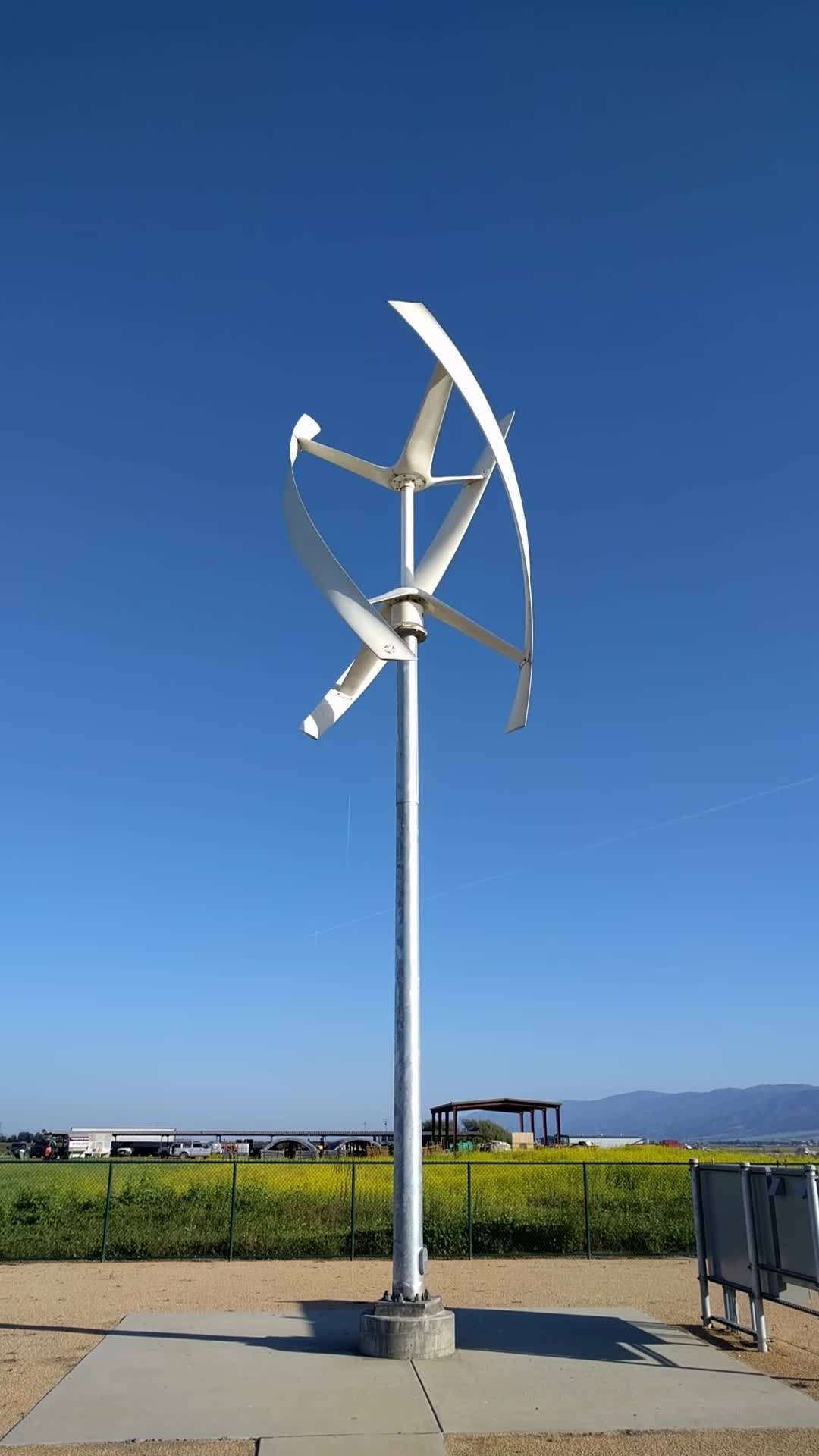They exist.

This actually exists https://en.m.wikipedia.org/wiki/Vertical-axis_wind_turbine
Here’s the specific bit relavent to OP’s question:
VAWTs often suffer from dynamic stall of the blades as the angle of attack varies rapidly.
The blades of a VAWT are fatigue-prone due to the wide variation in applied forces during each rotation. The vertically oriented blades can twist and bend during each turn, shortening their usable lifetimes.
Other than the drag-types, VAWTs have proven less reliable than HAWTs,[20] although modern designs have overcome many early issues.
VAWT = vertical axis wind turbine
HAWT = horizontal …
So TL;DR it’s worth the extra bearing for the added efficiency unidirectional wind flow allows.
Didn’t one fall over a while back in NYC area?
They aren’t as efficient that way. Horizontal axis wind turbines most of the time have their whole “swept area” in unobstructed airflow. For vertical turbines the blades pass into the turbulent air from the other blades and the vertical post.
The swept area of a horizontal turbine is increases more for a given amount of additional blade length than a vertical turbine as well. Extending the radius of a circle creates more swept area than an equivalent increase of length or width of a rectangle.
Because money/practical limitations: It costs more to make them and in ye olden times I’m not sure they had the technology to make a reliable vertical axis turbine.
They do exist these days, but aren’t as common because they’re more expensive and complicated (which also means more maintenance, which further adds to the long-term cost).
And if you really notice, your wind in most regions usually comes from about the same direction anyhow. It’s known as prevailing winds, and it how sailors managed to get anywhere they were going. Basically, towards the equator winds blow to the west, and at about the 30 degree mark away from the equator the winds blow towards the east (towards northeast, often in the north, and southeast in the south).
Pardon my ignorance but, how is a vertical wind turbine more mechanically complicated than a “standard” one?
I’m not an engineer but as I understand it: They are harder to make than a traditional windmill. Mechanically probably wasn’t the best word to use I guess, at least for most designs.




